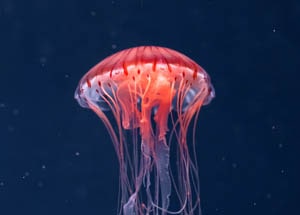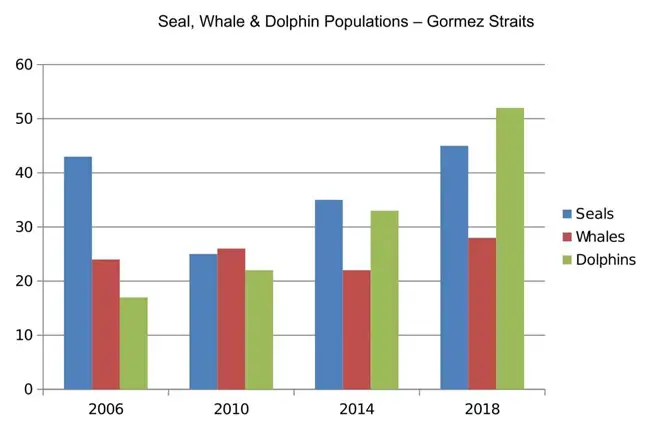English Documentary on Jellyfish with Transcript to practice reading, listening and vocabulary for IELTS & TOEFL candidates
Source of documentary: National Geographic YouTube Channel
Jellyfish
Jellyfish can be found all over the world, from deep oceans to shallow coastal areas. They’ve been around for hundreds of millions of years. Boneless, brainless and bloodless, jellyfish are some of the most diverse and fascinating creatures in the sea.
Jelly or Fish?
Jellyfish aren’t actually fish. With thousands of different species in two different biological phyla, jellyfish is more of a broad term than anything else. Unlike fish which have backbones, jellyfish are invertebrates. Jellyfish got their common name from the jelly like material they’re made out of, called Meza glia. In recent years, scientists have started using the umbrella term “sea jellies” to clear up the confusion.
Transdifferentiation
There is an immortal jellyfish. Jellyfish can reproduce sexually by releasing sperm and eggs into the water and reproduce asexually by splitting into two or cloning. But at least one jellyfish can actually reverse the aging process. The Turritopsis dohrnii has earned the moniker “the immortal jellyfish” for being able to undergo a process called “transdifferentiation”. An adult or juvenile under stress, instead of dying, can revert back to a polyp and begin the life cycle all over again. It is the only animal in the world that is known to be able to reverse its lifecycle.
Deadly stingers
Box jellyfish are the most venomous marine animals in the world. Jellyfish stings are a common fear of beachgoers worldwide and with good reason. There are an estimated 150 million jellyfish stings reported annually and while not all jellyfish have stingers, the Australian box jellyfish or chironex fleckeri is considered the most venomous marine animal in the world. Its deadly tentacles can grow up to 10 feet long. Humans and other animals that are unlucky enough to get stung, may experience paralysis, cardiac arrest and even death within just a few minutes.
What are jellyfish made of?
Jellyfish are 95% water. To put this into perspective, the average adult human male is about 60% water. But jellyfish are much simpler than humans; they don’t have hearts, blood, brains, or bones. Jellyfish do have very basic sensory organs in their bells and tentacles and a simple digestive cavity which serves as a stomach, intestine and esophagus. If a jellyfish washes up on the beach, it will mostly evaporate due to the high water content.
Jellyfish blooms
Groups of jellyfish are called blooms, swarms or smacks. Jellyfish blooms can form quickly, and scientists think that the jellies congregate for mating purposes. In extreme cases, the bloom can be so dense, there are more jellyfish than water in a given area. They can be as small as a cubic meter or cover hundreds of square miles. While these blooms are natural, they’ve caused problems all over the world, such as clogging fishing equipment in Mexico, destroying Chinese ships and closing beaches in Australia and Europe.
There is still so much to learn about these floating mysterious creatures. Scientists believe that there may be as many as 300,000 species of jellyfish that we haven’t yet discovered!




The Jellyfish
Jellyfish can be found all over the world, from deep oceans to shallow coastal areas. They’ve been around for hundreds of millions of years. Boneless, brainless and bloodless, jellyfish are some of the most diverse and fascinating creatures in the sea.
Jelly or Fish?
Jellyfish aren’t actually fish. With thousands of different species in two different biological phyla, jellyfish is more of a broad term than anything else. Unlike fish which have backbones, jellyfish are invertebrates. Jellyfish got their common name from the jelly like material they’re made out of, called Meza glia. In recent years, scientists have started using the umbrella term “sea jellies” to clear up the confusion.
Transdifferentiation
There is an immortal jellyfish. Jellyfish can reproduce sexually by releasing sperm and eggs into the water and reproduce asexually by splitting into two or cloning. But at least one jellyfish can actually reverse the aging process. The turritopsis dohrnii has earned the moniker “the immortal jellyfish” for being able to undergo a process called “transdifferentiation”. An adult or juvenile under stress, instead of dying, can revert back to a polyp and begin the life cycle all over again. It is the only animal in the world that is known to be able to reverse its lifecycle.
Deadly stingers
Box jellyfish are the most venomous marine animals in the world. Jellyfish stings are a common fear of beachgoers worldwide and with good reason. There are an estimated 150 million jellyfish stings reported annually and while not all jellyfish have stingers, the Australian box jellyfish or chironex fleckeri is considered the most venomous marine animal in the world. Its deadly tentacles can grow up to 10 feet long. Humans and other animals that are unlucky enough to get stung, may experience paralysis, cardiac arrest and even death within just a few minutes.
What are jellyfish made of?
Jellyfish are 95% water. To put this into perspective, the average adult human male is about 60% water. But jellyfish are much simpler than humans; they don’t have hearts, blood, brains, or bones. Jellyfish do have very basic sensory organs in their bells and tentacles and a simple digestive cavity which serves as a stomach, intestine and esophagus. If a jellyfish washes up on the beach, it will mostly evaporate due to the high water content.
Jellyfish blooms
Groups of jellyfish are called blooms, swarms or smacks. Jellyfish blooms can form quickly, and scientists think that the jellies congregate for mating purposes. In extreme cases, the bloom can be so dense, there are more jellyfish than water in a given area. They can be as small as a cubic meter or cover hundreds of square miles. While these blooms are natural, they’ve caused problems all over the world, such as clogging fishing equipment in Mexico, destroying Chinese ships and closing beaches in Australia and Europe.
There is still so much to learn about these floating mysterious creatures. Scientists believe that there may be as many as 300,000 species of jellyfish that we haven’t yet discovered!
Flawless job! Thank you so much indeed.
You also considered some accurate headings, which is great!
If you review your content in the body of this post, you’ll notice that there are already 16 flashcards automatically linked to your content and ready to be popped up by hovering the cursor of your mouse on them. LELB Society has over 2,400 illustrated flashcards like these 16 ones ready to be used in any given context.
Furthermore, I kindly draw your attention to the “Related Lessons” section that are dynamically assigned to any lesson or post depending on the selected tags or keywords.
I should thank you again.
Jellyfish are such a interesting creatures but some of them are really dangerous and we should be careful . Immortal jellyfish was really interesting for me because this creature’s life is reverse.
Such a good point you’re referring to! No other creature has been found to be able to reverse its aging process. It reminds me of the fantasy film, The Curious Case of Benjamin Button.